
Universal City Studios LLC, doing business as Universal Pictures is an American film production and distribution company that is a division of Universal Studios, which is owned by NBCUniversal, a division of Comcast.
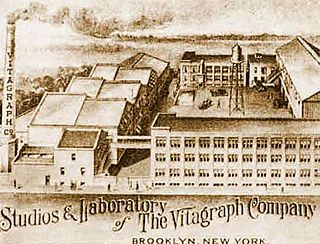
Vitagraph Studios, also known as the Vitagraph Company of America, was a United States motion picture studio. It was founded by J. Stuart Blackton and Albert E. Smith in 1897 in Brooklyn, New York, as the American Vitagraph Company. By 1907, it was the most prolific American film production company, producing many famous silent films. It was bought by Warner Bros. in 1925.

Universal City is an unincorporated area within the San Fernando Valley region of Los Angeles County, California, United States. Approximately 415 acres, within and immediately outside the area is the property of Universal Pictures, one of the five major film studios in the United States: about 70 percent of the studio's property is inside this unincorporated area, while the remaining 30 percent is within the Los Angeles city limits. Universal City is nearly surrounded by Los Angeles, with the area's northeastern corner touching the city of Burbank.

Goldwyn Pictures Corporation was an American motion picture production company that operated from 1916 to 1924 when it was merged with two other production companies to form the major studio, Metro-Goldwyn-Mayer. It was founded on November 19, 1916, by Samuel Goldfish, an executive at Lasky's Feature Play Company, and Broadway producer brothers Edgar and Archibald Selwyn, using an amalgamation of both last names to name the company.

The Hollywood Heritage Museum, also known as the "Hollywood Studio Museum," is located on Highland Ave. in Hollywood, California, United States.

The Nestor Film Company, originally known as the Nestor Motion Picture Company, was an American motion picture production company. It was founded in 1909 as the West Coast production unit of the Centaur Film Company located in Bayonne, New Jersey. While not the first movie studio in Los Angeles, Nestor made great strides on October 27, 1911, by establishing the first permanent motion picture studio in Hollywood, California, and producing the first Hollywood films. The company later merged with its distributor, the Universal Film Manufacturing Company, on May 20, 1912. Nestor remained a recognizable brand name for Universal until at least the middle of 1917.

David Horsley was an English pioneer of the film industry. He founded the Centaur Film Company and its West Coast branch, the Nestor Film Company, which established the first film studio in Hollywood in 1911.

Christie Film Company was an American pioneer motion picture company founded in Hollywood, California by Al Christie and Charles Christie, two brothers from London, Ontario, Canada. It made comedies.

Patrick Anthony Powers was an American producer who was involved in the movie and animation industry of the 1910s, 1920s, and 1930s. He established Powers' Cinephone Moving Picture Company, also known as Powers Picture Plays. His firm, Celebrity Productions, was the first distributor of Walt Disney's Mickey Mouse cartoons (1928–1929). After one year, Disney split with Powers, who started the animation studio Iwerks Studio with Disney's lead animator, Ub Iwerks.
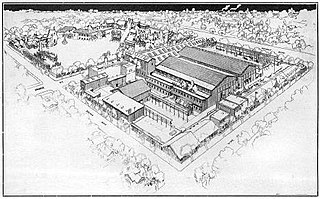
The Famous Players–Lasky Corporation was an American motion picture and distribution company formed on June 28, 1916, from the merger of Adolph Zukor's Famous Players Film Company – originally formed by Zukor as Famous Players in Famous Plays – and the Jesse L. Lasky Feature Play Company.
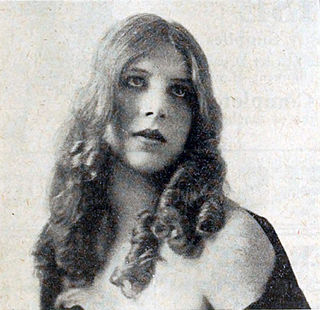
Valda Valkyrien was a Danish silent film actress.

The Independent Moving Pictures Company (IMP) was a motion picture studio and production company founded in 1909 by Carl Laemmle. The company was based in New York City, with production facilities in Fort Lee, New Jersey. In 1912, IMP merged with several other production companies to form Universal Film Manufacturing Company, later renamed Universal Pictures Company with Laemmle as president.
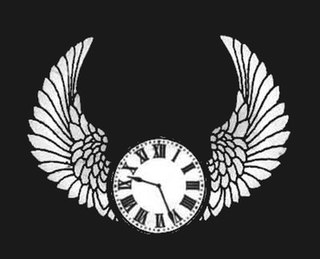
Mutual Film Corporation was an early American film conglomerate that produced some of Charlie Chaplin's greatest comedies. Founded in 1912, it was absorbed by Film Booking Offices of America, which evolved into RKO Pictures.
A movie ranch is a ranch that is at least partially dedicated for use as a set in the creation and production of motion pictures and television shows. These were developed in the United States in southern California, because of the climate.
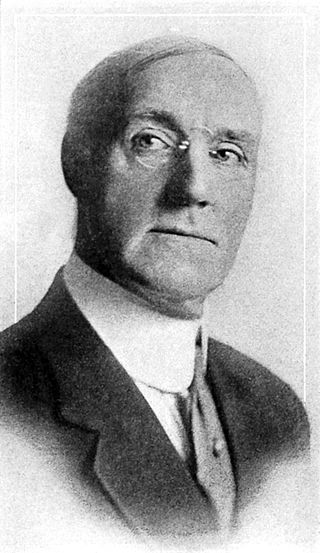
Thomas B. Ricketts was an English-born American stage and film actor and director who was a pioneer in the film industry. He portrayed Ebenezer Scrooge in the first American film adaptation of A Christmas Carol (1908), and directed one of the first motion pictures ever made in Hollywood. After directing scores of silent films, including the first film to be released by Universal Pictures, Ricketts became a prominent character actor.

Providencia Ranch, part of Providencia Land and Water Development Company property named for the Rancho Providencia Mexican land grant, was a property in California, US. It was used as a filming location for the American Civil War battle scenes in The Birth of a Nation (1915) and other silent motion pictures. The valley was also the site for two Universal Studios west coast operations in 1914.
A film studio is a major entertainment company that makes films. Today, they are mostly financing and distribution entities. Additionally, they may also have their own privately owned studio facility or facilities; however, most firms in the entertainment industry have never owned their own studios, but have rented space from other companies. The day-to-day filming operations are generally handled by their production company subsidiary.

William J. Bowman was an American stage and film actor, writer, and director noted for his work in the early 1900s on silent productions for studios in New York, New Jersey, Chicago, and in Los Angeles during the first decade of filmmaking in and around Hollywood. His direction of a series of films with matinee idol Francis X. Bushman in 1915 and his direction of the serials The Invisible Hand in 1920 and The Avenging Arrow in 1921 form only a small part of Bowman's extensive filmography.

The Champion Film Company was an independent production company founded in 1909 by Mark M. Dintenfass. The studio was one of the film companies that merged to form Universal Pictures.

Charles Herbert Christie and Alfred Ernest Christie were Canadian motion picture entrepreneurs.

















